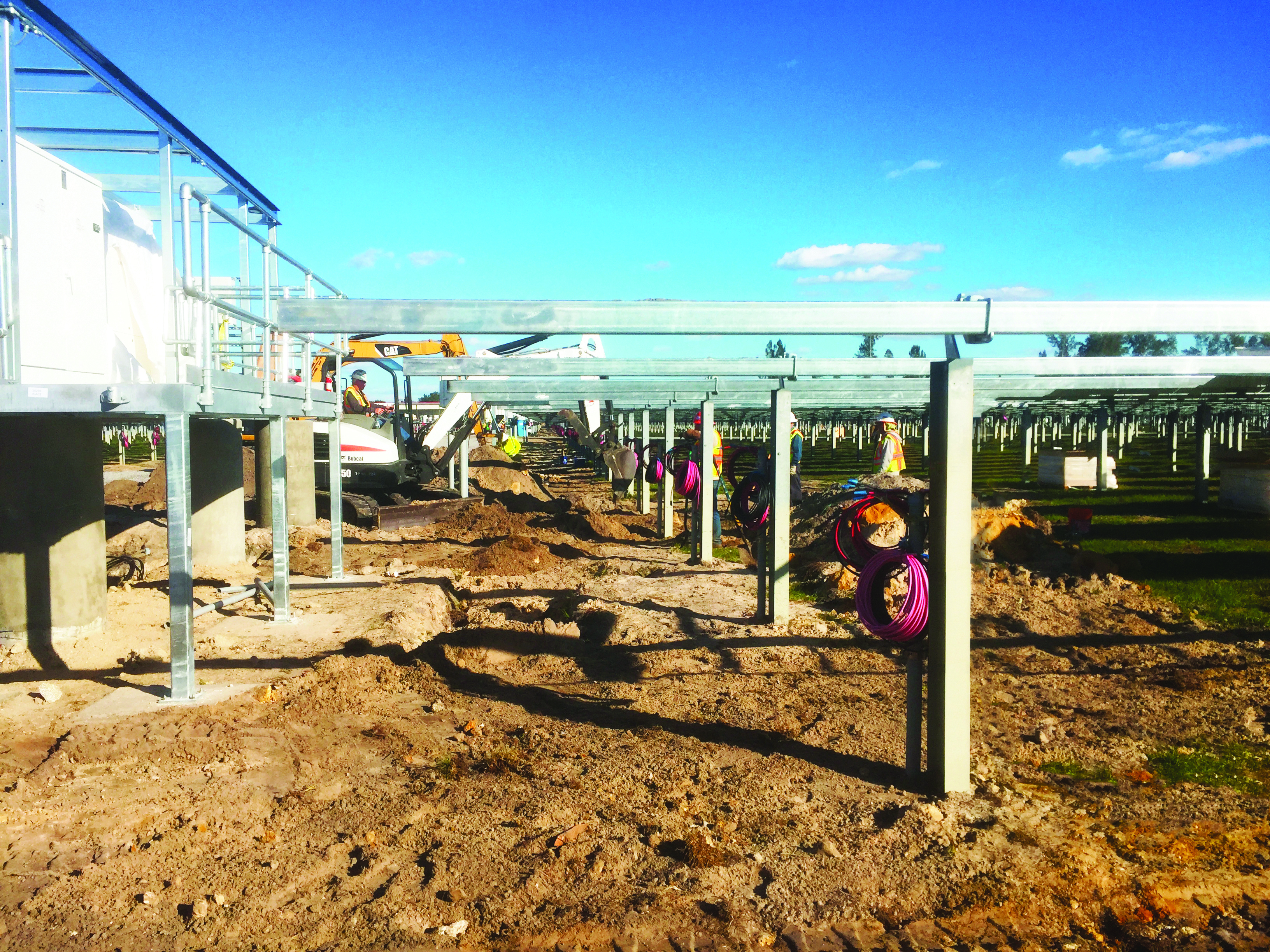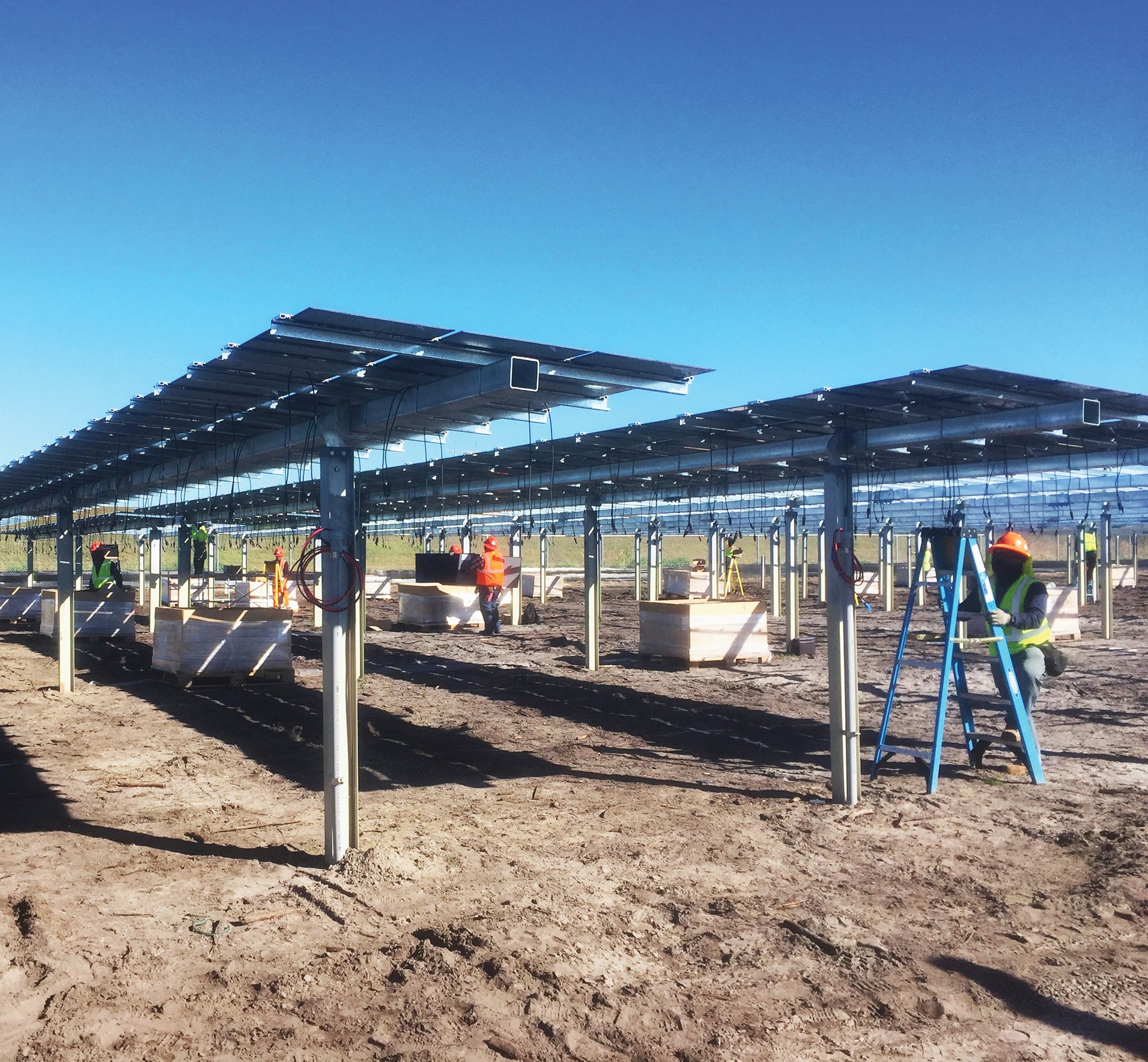Site selection — During project development, attention tends to focus on capacity and energy production goals. When selecting a project site, a developer might understandably seek to find a plot of land capable of hosting, for example, a 50-megawatt (MW) solar farm.
A better approach may be to look beyond installed capacity and energy production and conduct a site search that also considers the requirements for safely, efficiently, and successfully operating that solar farm for the next 30 years. This shift in mindset allows the needs of both the construction team and the operations and maintenance (O&M) team to be factored into planning and design.
Just because a plot of land is large enough to accommodate the desired PV module capacity does not mean it meets the necessary operational requirements.
For example, adequate space must be allowed between tracker rows to enable operations personnel to navigate arrays safely. Solar projects in arid climates should have accessways large enough to accommodate the pickups, trailers or water trucks that will need to traverse the site periodically to wash and clean modules. Likewise, solar projects that will experience heavy vegetation growth need accessways large enough for vegetation management equipment and activities throughout the life of the project.
Topography and soil conditions, among other factors, must also be assessed to make sure a site would support a sustainable civil design and meet the standard of care.
Geotechnical investigation — Because subsurface conditions account for some of the most significant risks on a solar installation, detailed geotechnical information on a site is needed early in project development. If available during the preliminary design phase, this information helps to optimize civil, structural and electrical design assumptions that impact total project cost. Without it, engineers may make assumptions that, if proven wrong, can dramatically impact project costs and schedules.
A detailed geotech report typically includes results from test pits, soil borings, field and laboratory resistivity testing, and corrosivity testing. On sites of 750 acres or less, a minimum of one soil sample is recommended for every 10 to 50 acres of land, depending on site conditions. On sites larger than 750 acres, a minimum of one soil sample is recommended for every 50 to 100 acres.
Pile embedment design — A detailed geotech report provides the information needed to design the pile embedment depth. The geotech (or supplemental) report should include pile pull testing results for both driven and pre-drilled piles, including compression, tension and lateral loads. It should also include groundwater information and lateral and axial design parameters (e.g., L-Pile or A-Pile) to be used in foundation design. For colder climates, it’s important to include geotech recommendations for design frost depth and how to address adfreeze stresses in pile design.
Unfortunately, preliminary or incomplete geotech reports do not include all pertinent information, which can lead to wide variation in pile embedment design among various contractors and racking vendors — even when the designs are based on the same geotech report. When insufficient geotech information is provided during the preliminary design and bidding phase, contractors and racking vendors can make assumptions to reduce pile embedment depth to keep material and installation costs down. However, this can lead to change orders later on in the project if the actual site conditions do not reflect the site conditions assumed in the contractor’s bid.
Often, the owner carries the risk until a detailed geotech report provides the details needed to confirm the contractor’s assumptions.
Just how much risk? Consider that a midsized (50-MW) solar farm will likely require as many as 25,000 individual foundation posts. A site with poor soil conditions could require an average embedment depth of 16 feet, which would require more than 75 linear miles of steel. However, if insufficient geotech information is provided, the contractor could assume an average embedment depth of 8 feet, cutting steel cost in half. A seven-figure cost differential between 8-foot and 16-foot embedments is possible and should be identified early in the project to reduce the risk of change orders later on.
Pile installation — Pile installation costs vary based on the total pile length and embedment length, and whether the piles are driven or pre-drilled. A pile test report should include pile drive times and any abnormal conditions that are experienced during the installations. If pre-drilled piles will be required on the site, that should be noted in the geotech report. This would allow the contractor to develop a more accurate cost estimate and better define the schedule for pile installation and the overall project.
Pile corrosion design — A detailed geotech report should include details on soil corrosivity — information that is critical for steel pile corrosion design — and should include measurements for electrical resistance, pH, sulfates, chlorides and organics. The report should include the interpretations of a qualified corrosion engineer regarding the corrosion severity for concrete and steel, and corrosion rates for galvanized and carbon steel. Recommendations should also be provided for the level of corrosion protection required to achieve the desired design life of the project.
While inverters and other project equipment may have, for example, a 15-year or 20-year design life, they may be upgraded or replaced over the project’s life. Piles, however, cannot be replaced — at least not at a reasonable cost. Therefore, piles should have a corrosion design life that will last the duration of the project’s life span.
Underground cable sizing — Thermal resistivity data from the geotech report is also needed to size underground cable. These values vary based on moisture content, density and other factors. Sandy, damp and coastal soils have lower thermal resistivity, for example, and pull heat away from cables, making it possible to specify smaller cable sizes. Clay soils with higher thermal resistivity — like those typically found in Arizona and Texas — are less apt to allow for dissipation of heat and call for larger cable sizes and trench widths, or the use of imported backfill with lower thermal resistivity.

